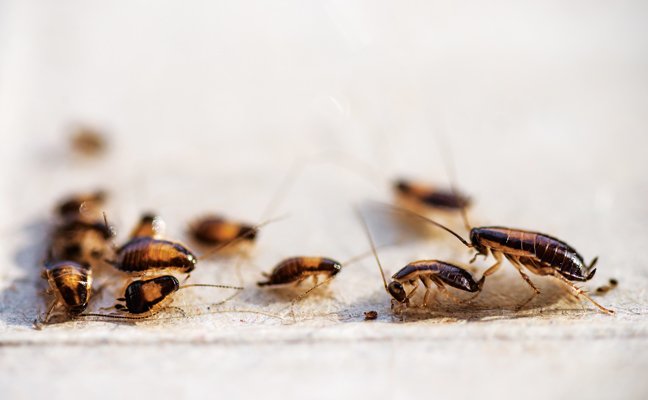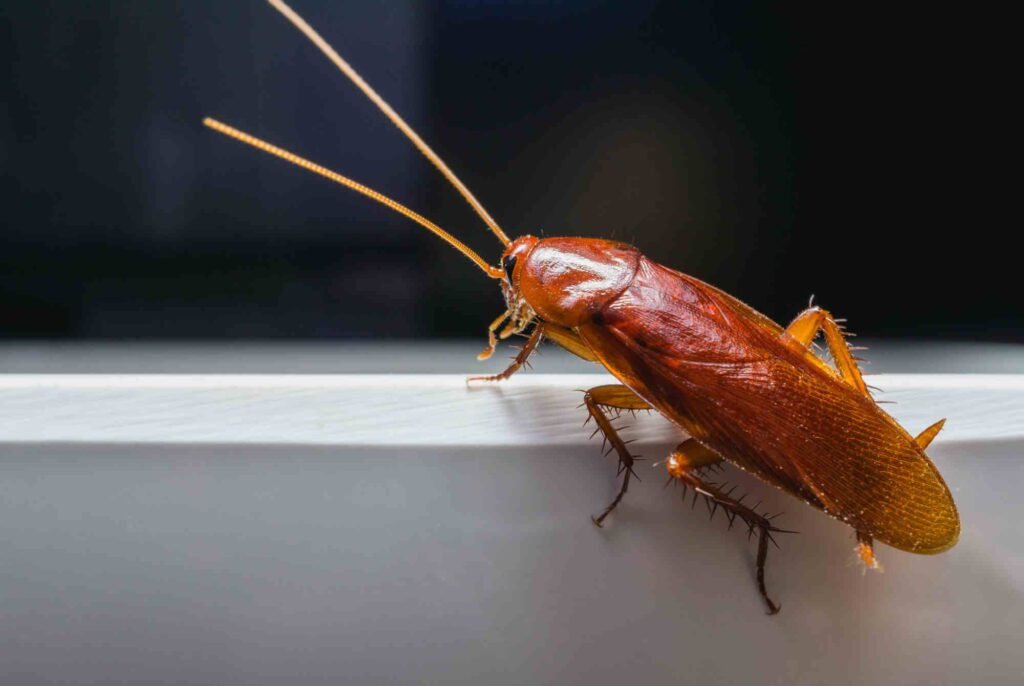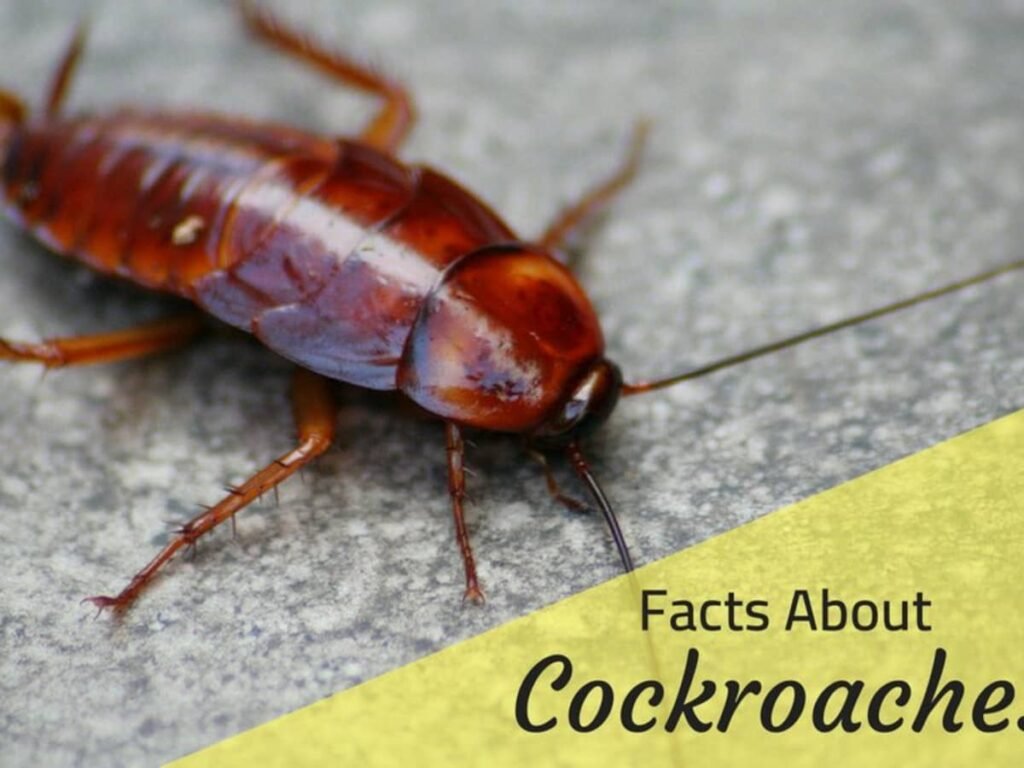If you’re dealing with a cockroach problem in Cleveland, TN, you know that these pesky insects can be a major nuisance. But fear not, because in this article, we will explore some effective strategies for pest management that will help you regain control of your home. From preventive measures to targeted treatments, we’ve got you covered when it comes to cockroach control. So let’s roll up our sleeves and get ready to tackle these unwelcome guests head-on!
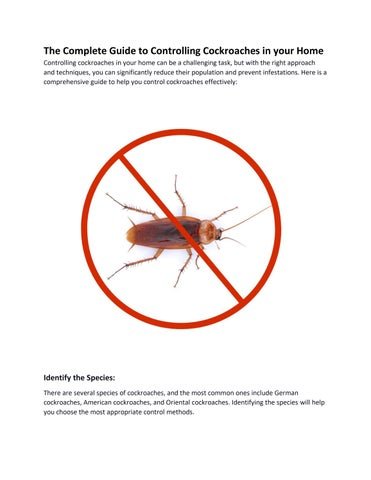

Understanding Cockroaches
The Common Cockroach Species
Cockroaches are a resilient and unwelcome presence in many households and commercial establishments. Understanding the different species of cockroaches is crucial for effective pest management. Some of the common types of cockroaches include the German cockroach, American cockroach, Oriental cockroach, and brown-banded cockroach. Each species has its own distinct characteristics and behavior patterns.
Cockroach Behavior and Habits
Cockroaches are nocturnal insects that prefer warm and humid environments. They are highly adaptable and can thrive in various conditions. These pests are known for their ability to reproduce quickly, with some species producing hundreds of offspring in a year. Cockroaches are attracted to food sources, such as crumbs, grease, and garbage. They have the ability to contaminate food and spread diseases through their droppings and shed skin.
Cockroach Infestation Signs and Dangers
Recognizing the signs of a cockroach infestation is crucial for prompt action. Some common indicators include the presence of cockroach droppings, which resemble black pepper or coffee grounds, a musty odor, and the sight of live roaches or their egg cases. Cockroaches can pose various dangers, including the transmission of diseases such as salmonella and E. coli. They can also aggravate allergies and asthma symptoms, especially in sensitive individuals.
Identifying Cockroach Infestations
Physical Evidence of Cockroaches
Physical evidence is often the first clue in identifying a cockroach infestation. Apart from observing live cockroaches, their droppings are a telltale sign. These droppings are small, dark, and cylindrical in shape. Another indicator is the presence of egg cases, which are brown and oval-shaped. Additionally, cockroach carcasses, shed skins, and a distinctive musty odor may be noticeable in infested areas.
Common Hiding Places
Cockroaches have a propensity for hiding in dark and secluded areas during the day. Some common hiding places include cracks and crevices, behind appliances or furniture, inside cabinets and drawers, and within electrical appliances. They also seek refuge in warm places near food and water sources. Being aware of these hiding spots helps in effectively targeting treatment and control measures.
Distinguishing Signs from Other Pests
It is essential to differentiate signs of cockroach infestations from those of other pests to implement targeted control strategies. While cockroach droppings are often mistaken for mouse or rat droppings, the former is more cylindrical in shape and smaller. Additionally, cockroach egg cases are distinct from those of other pests. Understanding these distinguishing signs aids in accurate identification and appropriate control measures.
Creating an Integrated Pest Management Plan
Assessment and Inspection
Before implementing any control measures, conducting a thorough assessment and inspection is crucial. This involves identifying the areas of infestation, determining the severity of the problem, and evaluating the conditions that may attract cockroaches. Inspecting both indoor and outdoor areas helps in formulating an effective pest management plan.
Identification of Cockroach Species
Identifying the species of cockroaches present is essential as different species may require different control methods. A professional pest control expert can accurately identify the species and recommend the most appropriate treatment approach. This step ensures that the control efforts are targeted and effective.
Setting Action Thresholds
Setting action thresholds involves determining the level of cockroach presence that justifies the implementation of control measures. This can be based on a variety of factors, such as the sensitivity of the environment, the risk of disease transmission, and the level of tolerance from occupants. By setting action thresholds, pest control efforts are carried out in a timely and efficient manner.
Selecting Control Methods
Various control methods are available for managing cockroach infestations. These include chemical methods, natural and non-chemical approaches, and seeking professional pest control services. The selection of control methods should be based on factors such as the severity of the infestation, the location, and the preferences and safety concerns of the occupants.
Implementing Treatments
Once the appropriate control methods have been selected, it is important to effectively implement the treatments. This may involve the application of insecticides, the use of cockroach baits, or the installation of traps and barriers. Care should be taken to follow the instructions provided and to ensure the safety of humans and pets during the treatment process.
Preventive Measures for Cockroach Control
Keeping a Clean Environment
One of the most effective ways to prevent cockroach infestations is to maintain a clean and hygienic environment. This involves regular cleaning and sanitization practices, including sweeping, vacuuming, and mopping floors, wiping down surfaces, and properly disposing of garbage. By eliminating food sources and removing potential hiding places, the likelihood of cockroach infestations can be greatly reduced.
Proper Food Storage
Properly storing food is an important preventive measure in cockroach control. This includes keeping food in sealed containers, storing it off the floor, and cleaning up spills and crumbs immediately. Pet food should also be stored in airtight containers and not left out overnight. By denying cockroaches access to readily available food sources, their attraction to a property is minimized.
Sealing Entry Points
Cockroaches can enter buildings through small cracks and openings. Seal any gaps or holes in walls, floors, and windows to prevent their entry. Pay attention to areas where plumbing pipes enter the building, as cockroaches can exploit these openings to gain access. By blocking their entry points, the likelihood of a cockroach infestation is significantly reduced.
Removing Clutter
Clutter provides hiding places for cockroaches, making it essential to keep living and storage areas organized and free from unnecessary debris. Regularly decluttering and removing items that are not in use minimizes potential hiding spots for these pests. By maintaining a tidy environment, cockroach infestations can be prevented.
Regular Inspections and Maintenance
Regular inspections and maintenance play a crucial role in preventing cockroach infestations. Regularly check for any signs of cockroaches or their activity, such as droppings or carcasses. In addition, address any plumbing leaks or moisture issues promptly, as cockroaches are attracted to water sources. By being proactive and vigilant, potential infestations can be detected early and appropriate actions can be taken.
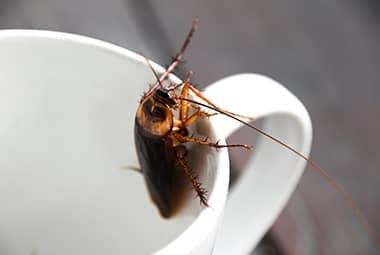

Chemical Methods for Cockroach Control
Using Cockroach Baits
Cockroach baits are effective in controlling these pests as they are designed to attract and eliminate them. Baits come in various forms, including gels, granules, and stations. The active ingredients in cockroach baits are slow-acting, allowing the roaches to transport the poison back to their nests, which leads to the elimination of the entire colony. It is important to place baits in areas where cockroaches are likely to encounter them.
Application of Insecticides
Insecticides can be used to target cockroaches directly. They are available in different formulations, such as sprays, dusts, and aerosols. When using insecticides, it is important to follow the instructions provided and take necessary safety precautions. Direct application to areas where cockroaches hide, such as cracks, crevices, and entry points, can help in reducing their population.
Outdoor Perimeter Treatments
Treating the outdoor perimeter of a building can act as a barrier and prevent cockroaches from entering. This involves applying insecticides to the foundation, along doorways, windows, and other potential entry points. Consulting a professional pest control service is advisable for outdoor perimeter treatments, as they can ensure that appropriate products and methods are used.
Dust and Aerosol Applications
Dust and aerosol applications are effective in targeting hard-to-reach areas, such as wall voids and electrical outlets. They are applied using specialized equipment and can provide excellent control in challenging situations. It is important to use these products cautiously and according to the instructions to ensure the safety of occupants and pets.
Follow-Up Treatments
Cockroach control is an ongoing process that may require follow-up treatments. This is especially important if the infestation is severe or if re-infestation occurs. Regular monitoring and inspection help in identifying any remaining cockroach activity and taking appropriate action. By conducting follow-up treatments, the likelihood of a recurring infestation is minimized.
Natural and Non-Chemical Approaches
Using Boric Acid
Boric acid is a commonly used natural remedy for cockroach control. It is available in powder form and can be applied to areas where cockroaches are likely to hide or travel. Boric acid works by dehydrating the pests, ultimately leading to their demise. However, caution should be exercised when using boric acid, as it can be toxic if ingested by humans or pets.
Sodium Bicarbonate Solutions
Sodium bicarbonate, or baking soda, can be mixed with sugar and water to create a cockroach bait. This solution can be placed in areas frequented by cockroaches. When ingested, the sodium bicarbonate reacts with the cockroach’s digestive system, causing internal disruption and eventual death. This method offers a natural and non-toxic alternative for cockroach control.
Essential Oils and Natural Sprays
Certain essential oils, such as peppermint, tea tree, and citronella, have repellent properties that can deter cockroaches. These oils can be mixed with water and sprayed in infested areas or used as a cleaning solution. Additionally, natural sprays made from ingredients like vinegar and soap can be effective in killing cockroaches upon contact. These natural approaches offer an environmentally friendly option for controlling cockroaches.
Ultrasonic Pest Repellers
Ultrasonic pest repellers emit high-frequency sound waves that are designed to repel pests, including cockroaches. These devices are safe for humans and pets and can be placed in infested areas or throughout the premises to deter cockroaches. However, the effectiveness of ultrasonic pest repellers in controlling cockroaches has been debated, and they may not be a standalone solution for severe infestations.
Traps and Barrier Methods
Traps and barrier methods can be used as a non-chemical approach to cockroach control. Sticky traps can be strategically placed to capture roaming cockroaches. Additionally, barrier methods, such as caulking cracks and crevices or using weather stripping on doors and windows, can prevent the entry of cockroaches. These methods can be used in conjunction with other control strategies for more effective results.
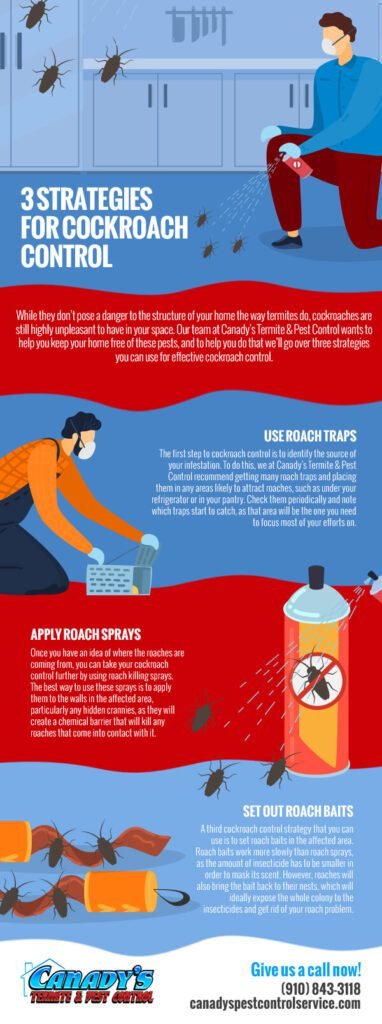

Seeking Professional Pest Control Services
Benefits of Hiring Pest Control Experts
Engaging the services of professional pest control experts offers several benefits in managing cockroach infestations. These experts have the knowledge, experience, and equipment to accurately identify the species of cockroaches and determine the most appropriate control methods. Additionally, they can provide customized solutions based on the specific needs and challenges of the property.
Evaluation and Customized Solutions
Professional pest control experts conduct a thorough evaluation of the infested areas to assess the severity of the infestation and identify contributing factors. Based on their findings, they develop customized solutions tailored to the unique needs of the property. This ensures that the control efforts are targeted and effective in eliminating cockroaches.
Guarantees and Warranties
Many professional pest control companies offer guarantees and warranties for their services. This provides peace of mind to property owners, as they know that the experts stand behind their work. If cockroaches reappear within the warranty period, the professionals will return to address the issue at no additional cost.
Long-Term Management Plans
Professional pest control services often provide long-term management plans to prevent future infestations. These plans may include routine inspections and treatments to maintain a pest-free environment. By implementing a long-term management plan, property owners can proactively address potential cockroach problems and minimize the risk of infestations.
Emergency Pest Control Services
In cases of severe or urgent infestations, professional pest control services can offer emergency assistance. They have the resources and expertise to respond quickly and effectively to mitigate the problem. This is particularly important in commercial establishments or sensitive environments where immediate action is crucial.
Dealing with Cockroach Infestations in Specific Areas
Cockroach Control in Kitchens and Bathrooms
Kitchens and bathrooms provide ideal conditions for cockroach infestations due to the presence of food, water, and hiding places. To effectively control cockroaches in these areas, it is essential to maintain cleanliness and hygiene, ensure proper food storage, seal entry points, and promptly fix any plumbing leaks or moisture issues.
Preventing Roaches in Restaurants and Food Service Areas
Cockroaches pose a significant risk in restaurants and food service areas, as they can contaminate food and compromise the reputation of the establishment. Implementing strict sanitation practices, regular inspections, and routine pest control measures are essential in preventing and managing cockroach infestations in these environments. Collaboration with professional pest control services is advisable to ensure compliance with health and safety regulations.
Cockroach Management in Commercial Buildings
Cockroach infestations in commercial buildings can have serious consequences for businesses. They can negatively impact employee productivity and customer perception. Conducting regular inspections, emphasizing cleanliness and sanitation, sealing entry points, and implementing effective pest control measures are key for preventing and managing cockroach infestations in commercial buildings.
Controlling Cockroaches in Residential Homes
Cockroaches can cause distress and discomfort in residential homes. To control cockroaches effectively in homes, maintaining cleanliness, practicing proper food storage, sealing entry points, decluttering, and conducting regular inspections are crucial. Additionally, utilizing appropriate control methods, such as baits or insecticides, can help eliminate infestations.
Cockroach Infestations in Schools and Hospitals
Schools and hospitals are sensitive environments where cockroach infestations can pose health risks and disrupt operations. Adopting strict sanitation practices, routine inspections, and implementing integrated pest management plans are crucial in managing cockroach infestations in these settings. Collaboration with professional pest control services is highly recommended to ensure the safety and well-being of students, staff, and patients.
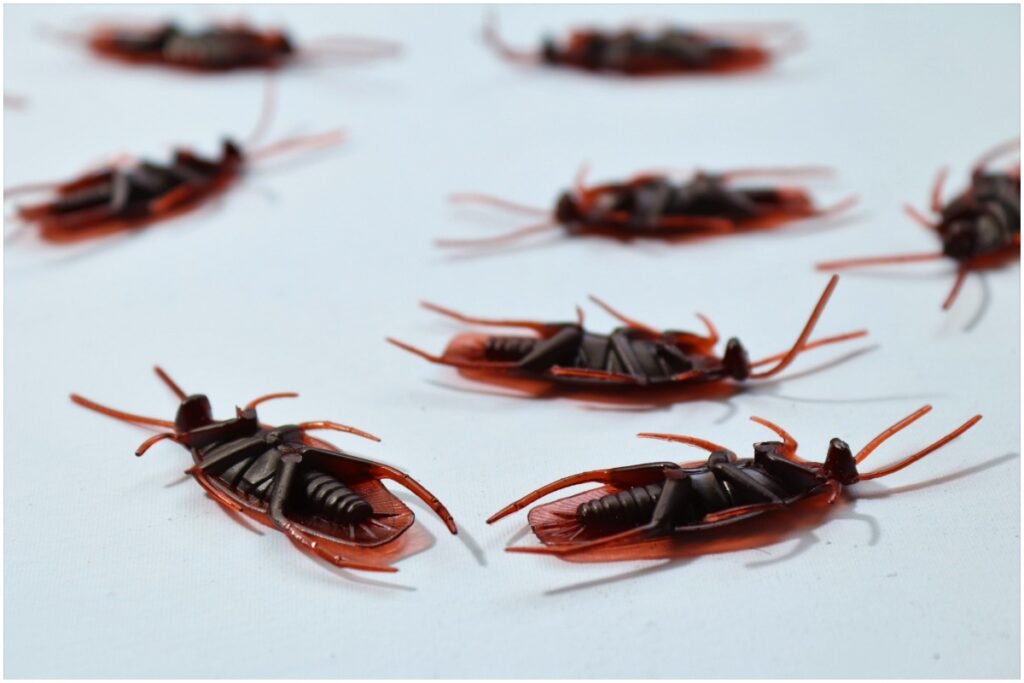

Maintaining Cockroach-Free Environments
Regular Cleaning and Sanitation Practices
Regular cleaning and sanitation practices are vital in maintaining cockroach-free environments. This includes sweeping, vacuuming, and mopping floors, wiping down surfaces, and cleaning kitchen appliances regularly. Paying attention to areas that are prone to spills or crumbs, such as dining areas and kitchen counters, helps eliminate food sources and minimize the risk of infestation.
Proper Waste Management
Proper waste management is essential in preventing cockroach infestations. Promptly disposing of garbage in sealed bags or bins, emptying trash cans regularly, and ensuring proper outdoor garbage storage are crucial measures. Cockroaches are attracted to food waste, so sealing and removing potential food sources is critical for keeping environments cockroach-free.
Effective Plumbing and Drainage
Effective plumbing and drainage systems play a significant role in preventing cockroach infestations. Cockroaches are attracted to water sources, so addressing plumbing leaks and ensuring proper drainage is important. Regularly inspecting and fixing any leaks or moisture issues helps eliminate these attractants and reduces the chances of an infestation.
Routine Monitoring and Inspection
Routine monitoring and inspection are necessary to proactively address potential cockroach problems. Regularly checking common hiding places, such as cracks, crevices, and entry points, helps detect any signs of cockroach activity early on. By conducting routine inspections, timely action can be taken to prevent infestations from establishing.
Creating a Culture of Awareness and Prevention
Creating a culture of awareness and prevention is crucial in maintaining cockroach-free environments. Educating occupants, employees, and residents about cockroach prevention and the importance of cleanliness and hygiene fosters a proactive approach. Encouraging reporting of any signs of cockroach activity or potential entry points facilitates prompt action and helps maintain a pest-free environment.
Addressing Cockroach Health Concerns
Cockroach-Related Allergies
Cockroaches are known triggers for allergies in some individuals. Exposure to cockroach droppings, saliva, or body parts can cause symptoms such as itchy or watery eyes, sneezing, and skin rashes. Implementing effective cockroach control measures, maintaining cleanliness, and practicing good hygiene can help reduce the risk of allergies associated with cockroaches.
Cockroaches and Asthma
Cockroach allergens can exacerbate asthma symptoms in susceptible individuals. People with asthma may experience increased wheezing, coughing, and shortness of breath due to exposure to cockroach allergens. Controlling cockroach infestations through integrated pest management, regular cleaning practices, and maintaining a clutter-free environment can help mitigate the risk of asthma symptoms stemming from cockroach allergens.
Potential Spread of Diseases
Cockroaches have the potential to spread diseases to humans. They can pick up disease-causing organisms on their bodies as they come into contact with unsanitary conditions and then transmit these organisms to food and surfaces. Diseases associated with cockroaches include salmonella, E. coli, and various forms of food poisoning. Effective cockroach control measures, combined with good hygiene practices, are essential in minimizing the risk of disease transmission.
Effective Cleaning and Hygiene Practices
Effective cleaning and hygiene practices are critical in reducing the risk of cockroach-related health concerns. Regularly sanitizing food-preparation areas, maintaining clean and dry environments, and practicing proper hand hygiene are important preventive measures. By ensuring high standards of cleanliness and hygiene, the risk of diseases and allergic reactions associated with cockroaches can be significantly reduced.
Medical Treatment for Cockroach Bites
Cockroach bites are rare, but they can occur in situations where cockroach populations are high or when the pests feel threatened. While cockroach bites are generally harmless, they can cause minor skin irritation and rarely result in secondary infections. Treating cockroach bites typically involves cleaning the affected area with soap and water, applying antiseptic, and monitoring for any signs of infection. Seeking medical attention may be necessary if there are signs of an allergic reaction or if the bite becomes infected.
In conclusion, effective cockroach control requires a comprehensive approach that includes understanding cockroach behavior and habits, identifying infestations, creating an integrated pest management plan, implementing preventive measures, employing chemical and non-chemical control methods, seeking professional pest control services when necessary, and maintaining a clean and hygienic environment. By adopting these strategies, individuals and businesses can effectively manage cockroach infestations and maintain cockroach-free environments that promote health and well-being.
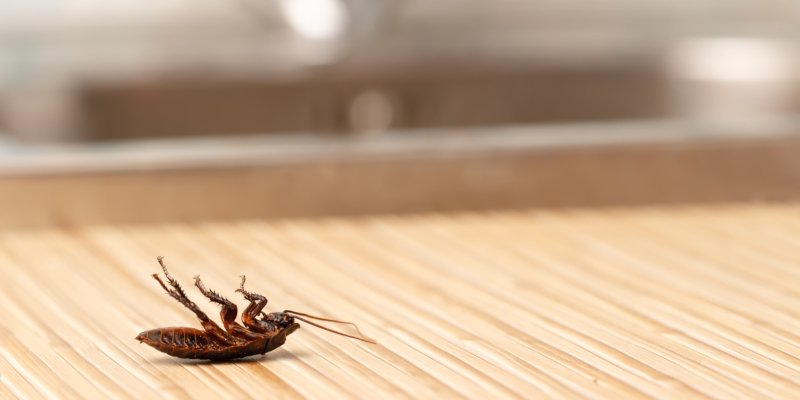

Your Expert in Animal Control and Extermination. Trust our experience for humane, effective pest management, protecting your property and ensuring peace of mind with Michael S.



